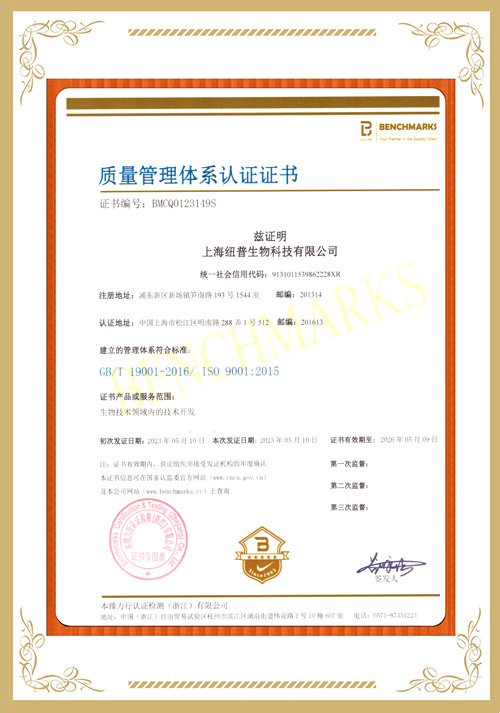- 抗体类型:多克隆
- 抗体来源:兔
- 抗体应用:ELISA, WB, IP, IF
- 特异性:Human,Mouse,Rat; other species not tested.
产品详情
-
产品名称
SPOP antibody
-
抗体类型
多克隆
-
抗体来源
兔
-
抗体亚型
兔IgG
-
抗体描述
SPOP Rabbit Polyclonal antibody. Positive IP detected in HeLa cells. Positive WB detected in HeLa cells, HepG2 cells, MCF-7 cells. Positive IF detected in HepG2 cells. Observed molecular weight by Western-blot: 42 kDa
-
抗体应用
ELISA, WB, IP, IF
-
应用推荐
Recommended Dilution:
WB: 1:200-1:2000
IP: 1:200-1:1000
IF: 1:50-1:500
-
特异性
Human,Mouse,Rat; other species not tested.
-
蛋白别名
HIB homolog 1, Roadkill homolog 1, speckle type POZ protein, SPOP, TEF2
-
制备方法
This antibody was obtained by immunization of SPOP recombinant protein (Accession Number: XM_005257724). Purification method: Antigen affinity purified.
-
组分
PBS with 0.1% sodium azide and 50% glycerol pH 7.3.
-
储存方法
Store at -20℃. DO NOT ALIQUOT
-
背景介绍
The SPOP (TEF2) protein was previously identified as an autoantigen in a patient with scleroderma pigmentosum. SPOP (speckle-type POZ protein), also known as TEF2, HIB homolog 1 or Roadkill homolog 1, is a member of the Tdpoz family containing one N-terminal MATH (Meprin and TRAF Homology) domain and one C-terminal BTB/POZ domain. SPOP can exist as a homodimer and is expressed in a variety of tissues localizing to the nucleus. Through an interaction with CUL-3, SPOP is involved in ubiquitinylation and protein degradation. SPOP specifically interacts with CUL-3 via its BTB/POZ domain and recruits substrates to the CUL-3-based ubiquitin ligase via its MATH domain. Substrates recruited by SPOP and targeted for ubiquitylation via the CUL-3/SPOP complex include PDX-1, Bmi-1, MacroH2A, PIPK II ∫ and Daxx. These substrates are subsequently degraded by the proteasome. In addition, SPOP itself becomes ubiquitylated by the CUL-3-based ubiquitin ligase and is targeted for proteasomal degradation.
-
参考文献
- Gao K, Jin X, Tang Y. Tumor suppressor SPOP mediates the proteasomal degradation of progesterone receptors (PRs) in breast cancer cells. American journal of cancer research. 5(10):3210-20. 2015.


